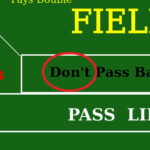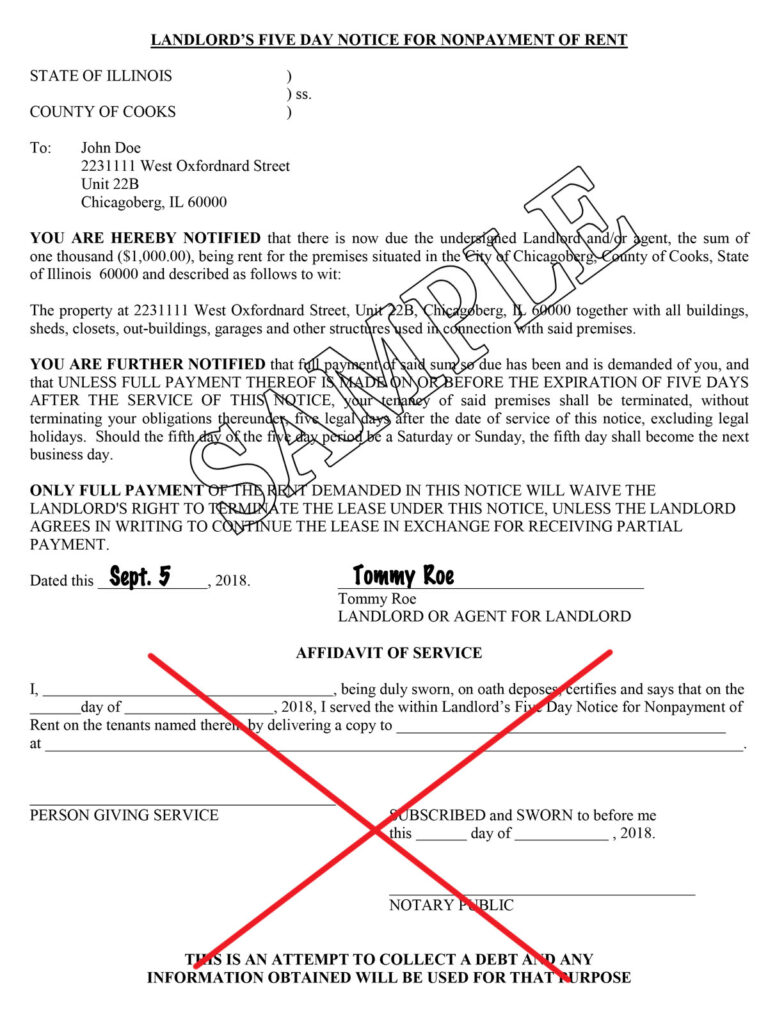 The Affidavit of Service – Don’t Do It! (until after service is made)
The Affidavit of Service – Don’t Do It! (until after service is made)
The most common problem I encounter lately with Illinois landlords who serve eviction notices is that they don’t understand how to properly sign the form that they serve on their tenant. This misunderstanding can lead to costly delays in that a landlord might have to re-serve a notice or worse yet, might have an eviction case thrown out of court because of a faulty notice. Let’s take a look at a part of the text of the Eviction act with respect to a five day notice:
Sec. 9-209. Demand for rent – eviction action. A landlord or his or her agent may, any time after rent is due, demand payment thereof and notify the tenant, in writing, that unless payment is made within a time mentioned in such notice, not less than 5 days after service thereof, the lease will be terminated. If the tenant does not pay the rent due within the time stated in the notice under this Section, the landlord may consider the lease ended and commence an eviction or ejectment action without further notice or demand. A claim for rent may be joined in the complaint, including a request for the pro rata amount of rent due for any period that a judgment is stayed, and a judgment obtained for the amount of rent found due, in any action or proceeding brought, in an eviction action under this Section. [there is some additional text to this statute provision omitted from this excerpt]
While the Eviction Act requires that the 5 day notice be in writing, nothing in the eviction act requires that the notice be notarized. The provision with respect to service is also instructive:
Sec. 9-211. Service of demand or notice. Any demand may be made or notice served by delivering a written or printed, or partly written and printed, copy thereof to the tenant, or by leaving the same with some person of the age of 13 years or upwards, residing on or in possession of the premises; or by sending a copy of the notice to the tenant by certified or registered mail, with a returned receipt from the addressee; and in case no one is in the actual possession of the premises, then by posting the same on the premises.
Nothing herein requires a notary. So where do we need a notary? The answer comes elsewhere:
Sec. 9-212. Evidence of service. When such demand is made or notice served by an officer authorized to serve process, the officer’s return is prima facie evidence of the facts therein stated, and if such demand is made or notice served by any person not an officer, the return may be sworn to by the person serving the same, and is then prima facie evidence of the facts therein stated. [bold emphasis added]
So,the requirement of a notary comes in regard to the RETURN OF SERVICE. This return of service may be SWORN TO by the person serving the notice. So, let’s reiterate. The notice itself need only be signed and dated. It is only on the Affidavit of Service that a landlord or person making service needs to state, in the affidavit of service, under oath that they served the notice.
Here is a sample of a five day notice. The notice that goes to the tenant should NOT have the affidavit of service filled out, signed, or notarized. In fact, it is IMPOSSIBLE to swear under oath that something has been served when it has, in fact, not been served, so a landlord should NOT fill out the affidavit of service on the copy given to the tenant and a landlord should not have a 5 day notice notarized on the copy given to the tenant.
 Now, things change dramatically AFTER a notice has been served. A landlord should always keep a copy of the notice they serve. once the tenant has been served, the Affidavit of Service should be filled out and signed in front of a notary. [Be aware, most notaries will refuse to notarize a document that is not signed in their presence]. This notice, with a filled in, signed and notarized affidavit of service will act as the return of service and prima facia evidence necessary to be presented to an eviction court in a forcible entry and detainer case.
Now, things change dramatically AFTER a notice has been served. A landlord should always keep a copy of the notice they serve. once the tenant has been served, the Affidavit of Service should be filled out and signed in front of a notary. [Be aware, most notaries will refuse to notarize a document that is not signed in their presence]. This notice, with a filled in, signed and notarized affidavit of service will act as the return of service and prima facia evidence necessary to be presented to an eviction court in a forcible entry and detainer case.
This is a problem that pops up regularly and is largely the result of landlords who obtain a legal form and really don’t know how to use it. Hopefully it will clear up some of the confusion over the format of a notice that must be handed to a tenant.
